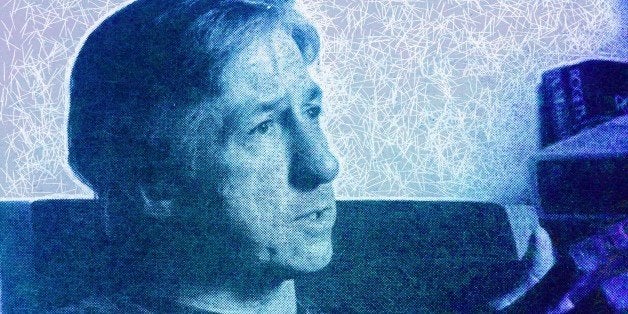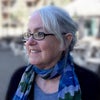
While I certainly can't claim to have been a close friend to Tom Hayden, news of his death hit me hard. His impact on my life has been sweeping. Like others who worked with him over the decades, I've spent the weeks since his passing on October 23rd processing the loss. For me, this includes conversations this past year about mortality ... both mine and his.
I was too young to have followed Tom's early trajectory as an activist and student journalist in the Civil Rights movement and too self-focused in high school to have noticed him during what George Skelton calls his "radical rock star" period working against the Vietnam War. But I hit college in California in time to become a foot soldier in his 1976 effort to take a seat on the U.S. Senate. It was my first time fusing together with like-minded people in pursuit of a better world. I was both inspired and challenged by Tom -- an enthusiastic intellectual with a kind of crumpled charisma. He managed to formulate the best real-world arguments I'd ever heard as to why America needed sweeping social and economic change.
Tom didn't win that first race, but his crusade launched the Campaign for Economic Democracy -- a grassroots organization that promoted a progressive agenda within the Democratic Party. I was all in. With Tom leading the charge, activists in chapters across the state pushed for solar energy and against polluters; for equal rights and against racism; for progressive candidates and against income inequality. We challenged the status quo, battled corporate interests and learned to organize.
During the early days of CED, we students fought to get the University of California to divest from apartheid South Africa (which it finally did decades later.) We conducted sit-ins for this cause and attained a bit of notoriety -- at least with our lawyers -- when a benevolent Jane Fonda, then married to Tom, wrote the check that bailed a handful of protestors at UC Davis and UC Berkeley out of jail. Later, Students for Economic Democracy was birthed -- a kind of subset to CED that further solidified the crucial role young people play in any movement for social change. I served as an early staffer of SED and travelled the state promoting economic democracy my first year out of college.
It was a heady period and Tom served as a touchstone for many of us throughout the late 70s and into the 80s. Many of those I labored with to make change back then remain close friends today and are now leaders in different arenas fighting the good fight.
Tom went on in 1982 to get elected to the California state legislature and forged a path as a radical insider there for the next 20 years. He carried on throughout and beyond writing books, teaching movement history, influencing policy and engaging future activists.
As founding editor of the Sacramento News & Review in 1989, I was fortunate to overlap with Tom over subsequent decades -- getting his read on the politics of the day, sitting down for the occasional formal interview. At my request, he agreed to write for SN&R on a swath of subjects over the years: Bill Clinton, 9/11, the Iraq War, Jerry Brown, the climate crisis. With his permission, I'd often offer his pieces to alternative editors across the country. In one 2008 essay that published in dozens of weeklies, Tom mused on the direction of the country as it headed into a presidential election. Reading his newly relevant essay "Dreams of Obama" again this past week, I recalled his skill at articulating the long view:
What is missing in the current equation is not a capable and enlightened centrist [Obama] but a progressive social movement on a scale like those of the past.
The refrain is familiar. Without the militant abolitionists, including the Underground Railroad and John Brown, there would have been no pressure on President Lincoln and no black troops for the South. Without the radicals of the 1930s, there would have been no pressure on President Franklin Roosevelt, no New Deal, no Wagner Act, no Social Security. Without the civil-rights and peace movements pressuring President John F. Kennedy, there would have been no march on Washington and no proposal to reverse the nuclear-arms race.
More recently, Tom participated in a national project SN&R launched in advance of the 2015 Paris climate talks. In Letters to the Future, we asked authors, artists, scientists and others to write to future generations predicting the success or failure of the Paris talks. Tom's letter heaped praise on Gov. Jerry Brown and then-House Speaker Kevin DeLeon for helping create what Tom called the "California Model" for how others might address the climate crisis by reducing carbon emissions with "co-equal benefits" for disadvantaged communities.
Tom and I exchanged emails last April about his choice to back Hillary Clinton in the California primary rather than Bernie Sanders. Surely progressives could agree to disagree when it came to this strategic choice about who to back in an all-important election? Well no. I was distressed to see Tom personally skewered as a "traitor" in social media by legions of one-time allies, all for daring to say he was "with Hillary" in the month leading up to the California primary. Like others who knew he was still recovering from a 2015 stroke that nearly felled him, I was distressed by the vitriol to which he was suddenly target. I told him I agreed with his position and advised him to ignore social media for a while and just take care of himself.
Ultimately, though, I don't think the disparagement mattered much to him. After all, he'd spent a lifetime on the frontlines, taking heat for his opinions, making enemies and friends in equal and sometimes counter-intuitive measure.
In the end it was just what he got for being Tom Hayden.
This last year my running association with Tom hit a bit closer to the bone.
He'd read an essay I'd written for the LA Times in late 2015 revealing that I'd been diagnosed with terminal cancer and given a "yearish" to live. The piece was my own musing on mortality and what to do with the time I had left. The warmth of his response moved me deeply and reminded that he was not too far from such considerations himself.
He wrote: "i was very touched by your writing about death and dying during a time i was recovering from a serious stroke last year. Please, please keep in touch by email or phone. Love, tom ... Ps how can i help?"
He continued to exhort me to write down my thoughts about mortality and life's meaning and share them with him, my friends and readers. "Every thought, every bit of advice" that I might offer would be worthy, he said, "but only if yu are up to it."
I've been attempting take his advice on this. My own "year to live" prognosis has played out in an unexpected way, as I've been one of the lucky patients to respond -- at least partially -- to immunotherapy and gene-based cancer breakthroughs. Though still living with terminal cancer, my days have been happily extended by an unknown amount and my effort to live a full and meaningful life proceeds.
Still I know -- and surely Tom was aware -- that no amount of time on this earth is guaranteed. As he wrote to his friend Steve Wasserman from his hospital bed after surviving that 2015 brush with death - he was left "wide awake in the unforgettable present moment." How we spend that moment -- in this one life we've got -- is for each of us to determine.
In an email chain among colleagues after Tom's death, my friend Don Villarejo (another important mentor during my college days) remarked that, during his years in the peace movement, he was most inspired by the thought, attributed to Ghandi: "Almost everything you do will seem insignificant, but it is important that you do it."
Tom "did it" better than most.
Eight years ago, in his essay on Obama, Tom wove a forceful argument for grassroots change that connected all the dots in a way that only he could do. The message is still quite relevant today. Basically, he did what he'd always done - inspired us to consider the past then work in the present to summon a better future.
That essay concluded: "This is a moment to live and fight for."
Tom is gone, but the rest of us still live in that very moment.
